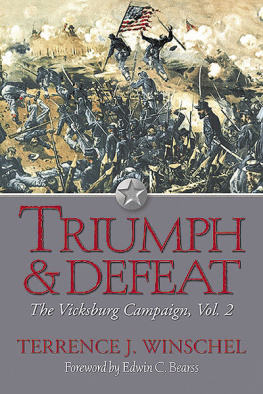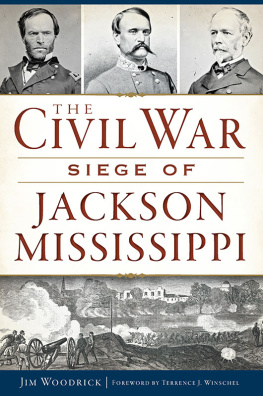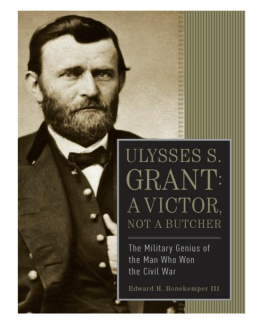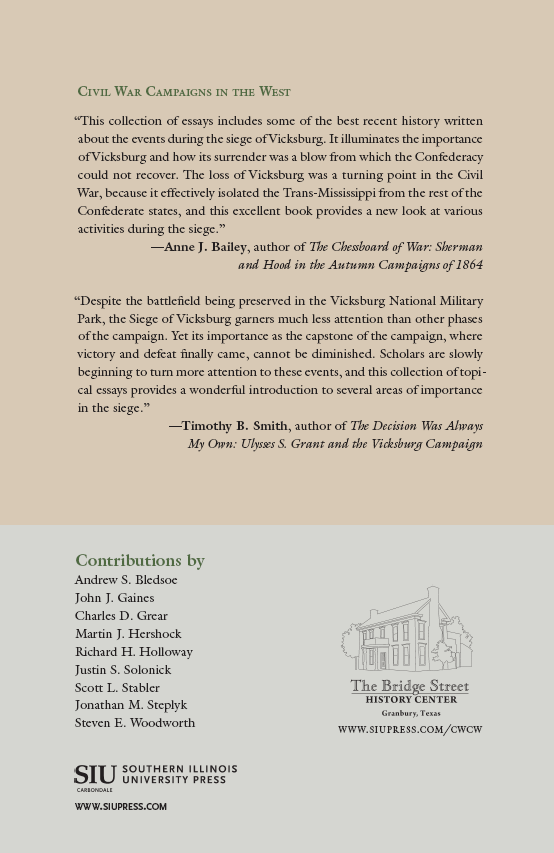Books cannot be developed without the help of many people. We, the editors, serve only a small role in creating this volume. The staff of Southern Illinois University Press has invested countless hours throughout every step of the publishing process, from designing the book to printing and marketing. Thank you. We owe our deepest gratitude to all the contributors. Their cooperation and dedication to this book made it a joy to work onmore important, it would not exist without them. Thank you all. As always, Southern Illinois University Press editor Sylvia Frank Rodrigue deserves distinct recognition for all her efforts. Sylvia campaigns for our books and goes above and beyond what is expected of any editor. Lastly, we would like to express our deepest appreciation to our families for their constant support. They inspire us in all our endeavors.
The Bridge Street History Center is in Granbury, Hood County, Texas. The city and the county were named for Confederate Civil War generals Hiram B. Granbury and John Bell Hood. The mission of the Bridge Street History Center is to collect, preserve, and interpret the life stories of the people of Granbury and Hood County and to examine how they illuminate the history of America. To learn more, visit http://bshc-granbury.org/wp/.
1
BY HAZARD AND BY SPASMS: GRANT AND HIS STAFF AT THE SIEGE OF VICKSBURG
Andrew S. Bledsoe
If General Grant had about him a staff of thoroughly competent men, disciplinarians and workers, wrote Assistant Secretary of War Charles A. Dana on July 13, 1863, the efficiency and fighting quality of his army would soon be much increased. As it is, things go too much by hazard and by spasms; or, when the pinch comes, Grant forces through, by his own energy and main strength, what proper organization and proper staff officers would have done already.
Swayed by the generals candor and pleased with this insiders perspective, Dana satisfied himself that the wild stories about Grants drunken binges during the campaign and siege of Vicksburg were baseless. Grants staff officers, however, raised additional concerns for Dana, and thus for Stanton and the War Department. In addition to the drinking rumors, stories of
An alarmed Washburne asked Grant about the situation at army headquarters. Though Washburnes letter to Grant is lost, Rowley apparently had a chance to read it and respond to Washburne soon after. Rowley declared, I hope [your letter] will draw out an answer from [Grant] of the right kind but I fear he will hardly have the heart to cut loose from the four Colonels. It is very important that it should be done. You perhaps can realize the necessity of it. Rawlins rote me last night that he would write you immediately upon the subject and state some facts. I hope that when I am called back from Columbus, Ohio, to find fewer loafers about head Quarters.
This, then, was the peculiar command culture Dana stepped into at Grants headquarters in the spring of 1863, and the Assistant Secretary of War was determined to get to the bottom of things. After lengthy observations, Dana reported to Stanton that he found Grants staff to be a curious mixture of good, bad, and indifferent. Judging the general as neither an organizer nor a disciplinarian himself, Dana surmised it was only natural that Grants military family consisted of a mosaic of accidental elements and family friends. But of the dozen or so officers serving as Grants personal staff during the siege of Vicksburg, Dana believed only four were actual working men, while two others were able to accomplish their duties without much work, and the rest consisted of several who either dont think of work, or who accomplish nothing no matter what they undertake.
Historians assessments of Grants military staff and their performance during the siege of Vicksburg range from effusive, to critical, to everything in between. Historian Bruce Catton, for instance, praises Grants assistant adjutant general Lieutenant Colonel John A. Rawlins as the keeper of Grants conscience while simultaneously criticizing him for build[ing] up his own
Dating back to at least the seventeenth century, European practice of employing personal military staffs had, by the 1860s, greatly developed in both utility and sophistication. By the Napoleonic era, French and Prussian military planners revolutionized the function of headquarters staffs to encompass virtually every necessary enterprise a commanding officer might require. Napoleons chief of staff Louis Alexandre Berthier hoped that his Document sur le Service de ltat-Major Gnral lArme des Alpes, written in 1796, would serve as a model for staff operations. Dividing an armys staff into four broad subgroups, each overseen by an adjutant general, Berthier unified staff operations under a single chef dtat major (chief of staff) who would serve as a conduit for a commanders orders and, in his words, be the central pivot of all operations in an army. Nobody can send out anything in his own name; everything must come from the chief of staff.... All correspondence is addressed to him; he signs everything; in case he is absent he will issue special orders.
Although the American military establishment created a general staff in 1862, the United States Armys usage of military staffs prior to and during the Civil War reflected the British model more than any other. American staff officers received practically no specialized instruction on how to carry out European-style staff functions, and the United States Military Academy at West Point provided its graduates with no guidance as to staff duties. Only in 1862 did Lieutenant William P. Craighill, an engineering instructor at West Point, publish his Army Officers Pocket Companion on Civil Warera staff duties.
As the Vicksburg siege got underway, Grant commanded approximately 44,000 effective troops, organized into five different corps of ten divisions. The Army of the Tennessees corps system, originating with the Napoleonic concept of corps darmee, each consisted of two to four divisions or other elements, and army corps were, theoretically, capable of independent actions and operational flexibility. Dedicated division and corps staffs helped commanders manage their respective commands, and these generals in turn reported to Grant through his own personal staff. While simplifying the difficulties inherent in coordinating and directing multiple elements within the army as a whole, the Army of the Tennessees organizational effectiveness still depended in great measure on the abilities of its division, corps, and army staffs.
Grant recognized how difficult it would be to manage a complex siege operation with a volunteer army and an inexperienced, untrained personal staff. As early as December 14, 1862, Grant informed the General in Chief, Major General Henry W. Halleck, that [m]y individual labors have been harder probably than that of any other Gen. officer in the Army except probably yours and [George B.] McClellen [sic], with the exception of the time you was present with the Army in the Field. Much of this was due to having an entire Staff of inexperienced men in Military matters. Grant believed that [o]f my individual The rest of the lot, presumably, Grant could do without.














